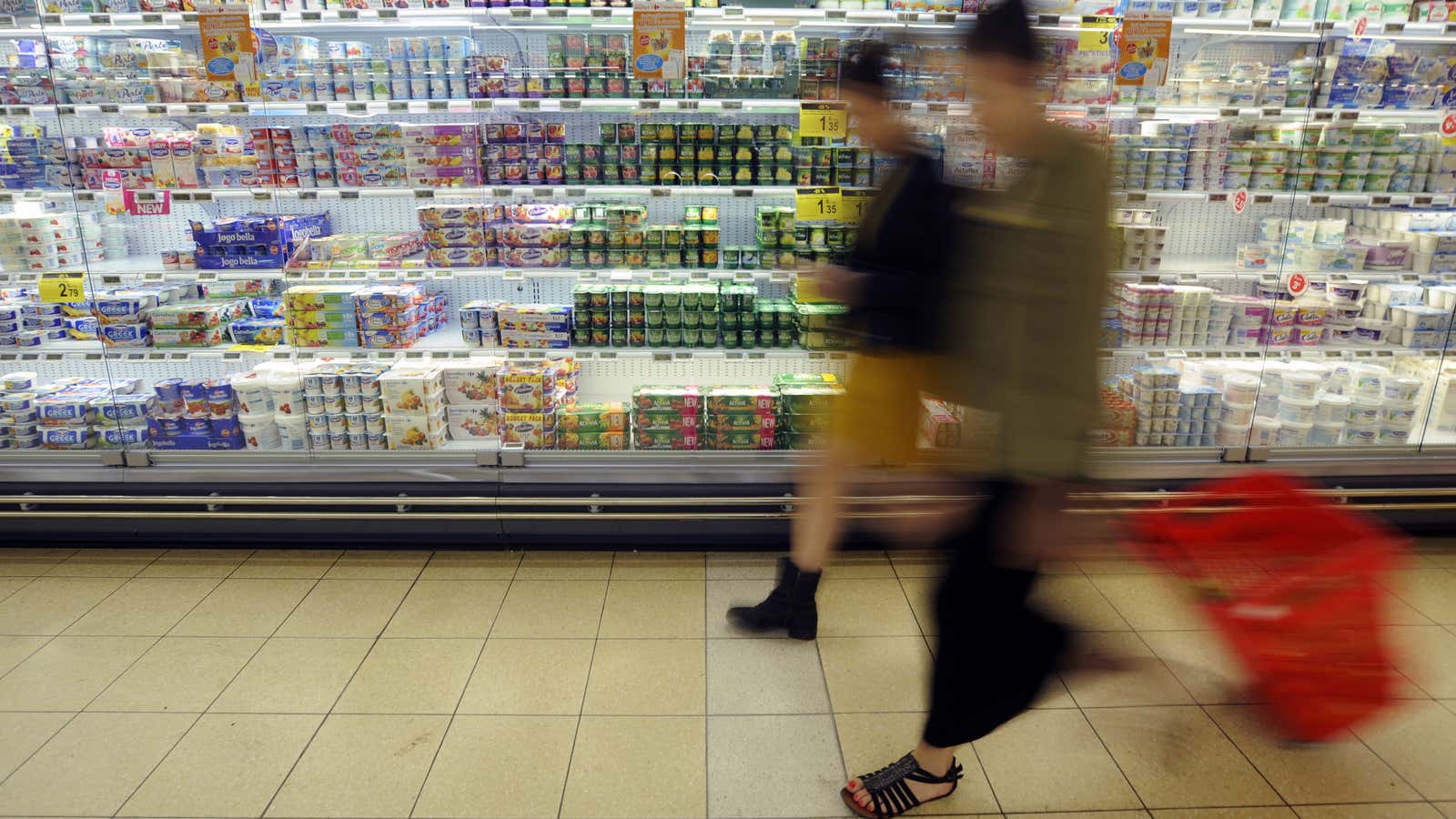Gil Phipps cringes when he hears the G-word, a three-syllable mood-killer he’s spent the last two decades trying to eradicate.
Generic.
The good news, he’s winning. When people wheel their carts up and down Kroger grocery aisles, fewer are equating store-brand items with cheapness. That’s because Phipps, who’s in charge of corporate brands at Kroger, has been retooling the company’s own products.
“It used to literally be about getting the lowest price you can,” he told Quartz. “We made great changes, and it took awhile for people to notice.”
Instead of selling basic, low-cost olive oil under one of its store brands, Kroger has been vetting Italian suppliers for better Sicilian unfiltered olive oil. More imaginative packaging also is on the way, Phipps says.
Albertsons, Publix and Costco also are overhauling their generic brands. gaining enough critical mass to alter the grocery landscape. More people are buying store brands, Kroger says. Last year, some 20 million households bought a Kroger-made Simple Truths brand item. In the third quarter, Kroger’s store-brand represented almost 28% of items sold, accounting for 26% of sales dollars.
The new G-word’s main victim? Whole Foods, which made a name for itself selling high-quality and organic foods. In November 2015, Whole Foods (often the butt of high-end food movement jokes) began working to improve its own value perception with customers, according to analysts at Credit Suisse.
“There’s a fair number of items we’ve lowered prices on so far this year and have plans to do more as the year goes on,” Whole Foods president A.C. Gallo told investors during a recent earnings call. That goes hand-in-hand with the opening of “365 by Whole Foods Market,” a chain of stores aimed at Millennials which puts value first. The chain is also using promotions—25-cent cookies and cups of coffee—to lure more people into stores.
“Hopefully they’ll continue to buy other things when they come in,” Gallo said.
Whole Foods surprised global food manufacturers by proving consumers want—and are willing to pay for—more healthful options and now regional grocery chains are fighting back. The kickback came faster than Whole Foods anticipated, said Brian Todd, president of The Food Institute, a non-profit group following the business of food.
People like Phipps need only look outside the US to see the potential of developing private-label grocery brands. In a 2014 global survey of 30,000 online consumers in 60 countries, Nielson found that 71% of respondents noticed private label brands had improved.
About 59% of people globally say they would buy more private label brands if a larger variety of products were available, but stocking the right items is an art, according to Nielson. People like Gil Phipps need to get good at reacting to and—more importantly—driving consumer interests.
“You have to absolutely keep your finger on where they’re going and also keep your finger on global trends to introduce them to things,” he said.
